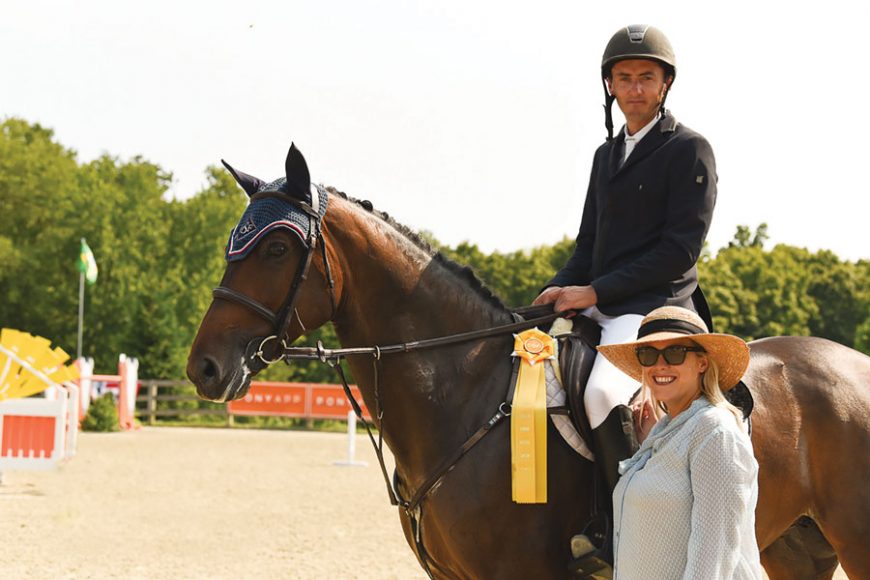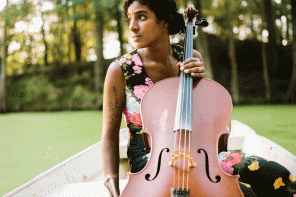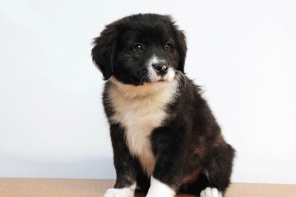When Christian Coyle uses the phrase “back home,” he’s not talking about Old Salem Farm in North Salem, where he’s been an equestrian trainer for about a year, but about Ireland, where he was born and raised and first began to make a name for himself as a rider.
Growing up in County Derry, he learned from an uncle who rode but also picked it up himself, riding his pony at home.
“It grew from that, to be honest,” he says. Seven years ago, he came to the United States after operating his own training business “just for a change. I competed at home. I never competed in America.” After three months, he went home for a visa and returned for good.
Continuing to represent Ireland, he “has jumped into the ribbons in grand prix events throughout North America,” says Chelsea Dwinell, placing in every grand prix and welcome class he entered last summer, including a sixth place finish in the Fairfield County Hunt Club’s $30,000 Grand Prix; two second place finishes in the $10,000 Vineyard Vines Welcome Stake at Vermont Summer Festival; sixth, third and second place finishes in the Vermont festival’s $30,000 Grand Prix; first in the $10,000 Sussex Welcome Stake as the Sussex County Fair in New Jersey; and third in the $15,000 Old Salem Farm Summer Jumper Classic.
Dwinell ought to know. She is not only marketing and sales manager at Old Salem but Coyle’s wife, the mother of their baby, Daisy, a charmer who at 4 months already knows how to rock a pink party dress and has had her first pony ride. Is she to the saddle born? Only time will tell. For now, Coyle is sticking to training the 10-year-old to 60-something sets. Equestrian sports transcend age and gender, because the emphasis is on the horse and rider becoming one, Coyle says, pointing to 72-year-old Olympic show jumping silver medalist Ian Millar, who holds the record for most Olympic appearances by anyone in any sport (10). Coyle prepares his two- and four-legged clients for hunter, jumper and equitation events. Though hunter and jumper both involve navigating obstacles, hunter emphasizes the artistry of rider and horse while jumper focuses on pure athleticism in timed trials that require speed and clean execution. Equitation is all about the form of the rider.
The three disciplines will be on display — along with an array of amateur and professional riders of all ages — in the Spring Horse Shows, which return with Welcome Day May 5 and then continue May 7 through 12 and May 14 through 19. (A fourth discipline — dressage, in which the horse performs a series of memorized movements with minimal commands — takes center stage, along with jumping, in the Adequan/FEI North American Youth Championships at the farm July 30 through Aug. 4.)
Whatever the discipline, the horse matters. Show jumping primarily uses Dutch Warmbloods, an elegant middle-weight breed whose jumping skills originated with their battlefield agility, according to the PBS miniseries “Equus: Story of a Horse.” Coyle maintains a group of geldings and mares at Old Salem — which travels to Wellington, Florida, the American equestrian capital, in the winter — as well as in Ireland.
“Stallions are not as popular here,” he says. “They can be boisterous. But it depends on the horse. Some mares are boisterous.”
Another difference between “back home” and here, he says, is that Irish riders are a little more rough-hewn. Here, Coyle emphasizes the need for horse and rider to hone their craft.
“You can’t over-prepare or you’ll burn out,” says the trainer, who sees his clients roughly four times a week. “But as with anything, the more you can practice, the better you can become.”
For more, visit oldsalemfarm.net.





